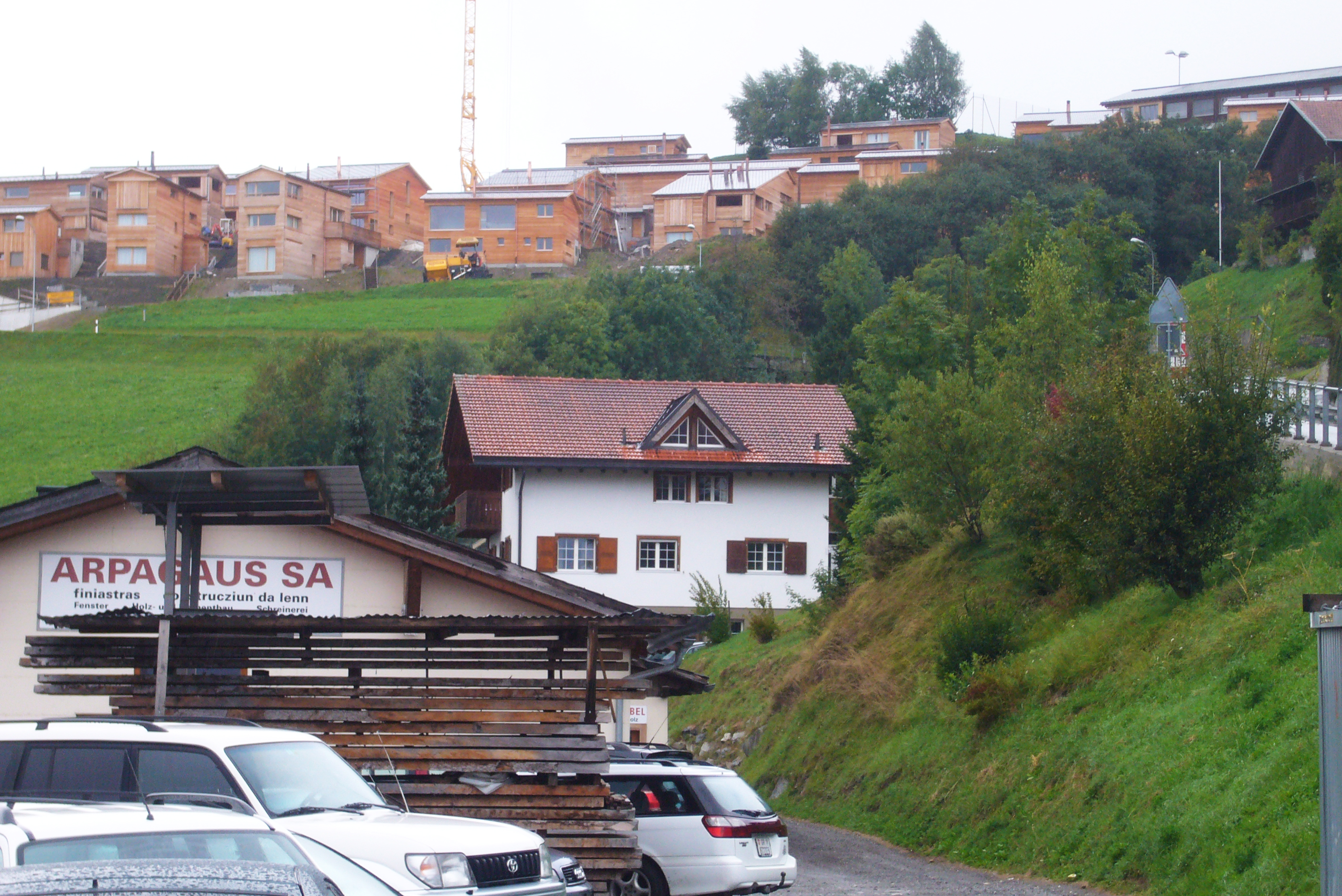
“Simply no room” for bears in Switzerland

The government's Bear Concept, a strategy document to coordinate the peaceful co-existence of bears and humans, has been widely criticised.
Mountain communities, hunters and farmers rejected the concept; environmental groups welcomed the government’s efforts but called for a clearer strategy.
The authorities put together the document after a brown bear was spotted several times in Switzerland last July, gaining immediate celebrity status because it was the first to be seen in the country since 1904.
The document, which gives guidelines on the balance between the interests of bears and humans, was sent to the relevant organisations for consultation last month.
The concept defines what steps to take when a bear is discovered on Swiss territory, especially in the case of bears that have lost their natural shyness of humans and become potentially dangerous.
The idea was for the concept to be reworked to take in reactions and then to come into force in June.
Illusion
No one who actually lives or works in bear country welcomed the document.
“A co-existence of wolves, bears and humans in our country is an illusion,” said the umbrella group for Swiss mountain areas, adding that the reintroduction of large carnivores into Switzerland would only cause problems which could not be solved – even with well-meaning suggestions.
Peppino Beffa, head of the Swiss Sheep Farmers Association, said there was simply no room for bears in heavily populated areas of the country.
Valais cantonal government was also sceptical, rejecting the proposed categorising of any ursine visitors into low-profile bears, damage-causing bears, problem bears and high-risk bears.
“As soon as a bear becomes conspicuous, you have to get rid of it,” it said.
Canton Graubünden, which briefly hosted the brown bear last summer, has yet to make a statement.
Last year’s bear came from an established population founded by the Italians in the Trentino region, about 70 km from the Swiss border.
It caused some controversy, killing one calf and more than 20 sheep in its first weeks in the area.
Several participants in the debate raised the question of cost that such “bear management” would entail.
The Farmers’ Association demanded unconditionally that public money would pay for any protective measures in addition to any bear-related damage.
Targeted measures
Unsurprisingly, an umbrella organisation for Swiss hunters called for shooting regulations to be relaxed.
It suggested limiting bears to precisely defined areas – outside of which anything was fair game.
Under federal law, it is possible to shoot an animal if it causes damage, but the concept goes into more detail on what kind and extent of damage requires intervention in the case of bears.
With wolves and lynx, local authorities have the right to shoot animals that cause excessive damage to livestock. This will not be allowed with bears and prevention measures are recommended instead.
The only support for bears came from animal protection groups.
Pro Natura, Switzerland’s largest nature conservation organisation, said it was convinced that bears and humans could get along.
It said the main thing was for humans to be informed how to behave properly towards bears.
The WWF welcomed the government’s prompt reaction to the bear situation but called for a clear strategy regarding public relations work.
swissinfo with agencies
Bears, along with wolves and lynx, were hunted to extinction in the Alps in the 19th century. The last bear in Switzerland was killed in 1904.
A single male brown bear appeared in Müstair valley in southeastern Switzerland last July, crossing over from the Italian side of the border.
The bear, which caused a sensation in the national press, is now in hibernation in an unknown location in the region.
In anticipation of more bears straying into the country, the Federal Environment Office last summer launched a strategy document – the Bear Concept – setting out guidelines for the management of bears on Swiss territory.
This has been welcomed by animal organisations but criticised by everyone else.
There are an estimated 50,000 brown bears in Europe in separate fragmented populations.
Brown bears are omnivores and feed on plants, berries, roots, fungi, fish, insects and small mammals.
They like to den in a protected spot during the winter months.
Brown bears can grow to a huge size, males up to 350kg, females to 200kg.

In compliance with the JTI standards
More: SWI swissinfo.ch certified by the Journalism Trust Initiative









































You can find an overview of ongoing debates with our journalists here . Please join us!
If you want to start a conversation about a topic raised in this article or want to report factual errors, email us at english@swissinfo.ch.